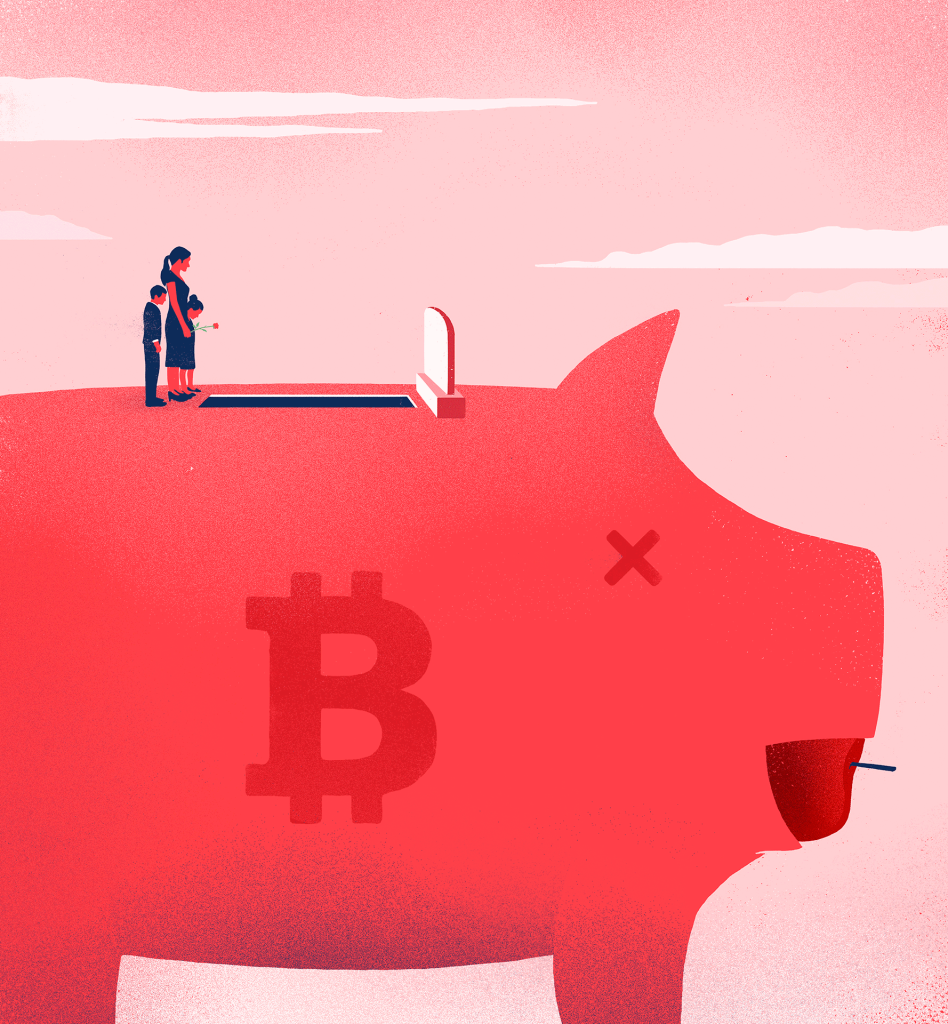This article explains Cryptocurrency as well as it’s future, and the positive & negative impacts of regulation …
Everything You Need To Know About Bitcoin In 2022 & Beyond
by Milan Tomic | Contributing Writer | Eternal Affairs Media
Blockchain technology, a system for creating, storing, and processing digital assets, is what made Bitcoin, the first cryptocurrency, conceivable. Other cryptocurrencies are usually performing well when Bitcoin is doing well. Other cryptocurrencies are often also struggling when Bitcoin is performing poorly.
Apart from being so famous in the crypto world, Bitcoin was regarded as the best performing asset of the last decade by many experts.
Bitcoin experienced a strong increase in market value in 2021. A single coin was worth $32,000 at the beginning of the year; by April, that value had doubled. The price would be supported, in the opinion of traders, by a larger acceptance of Bitcoin by businesses and major institutions.
The reality, however, lagged behind the promise; there was still little that could be done with Bitcoin aside from speculative, dangerous trading. Cryptocurrencies fell along with the stock market in late 2021 due to a collapse in highly valued growth stocks. Bitcoin ended 2021 with a market value of roughly $47,300. In August 2022, the price of one Bitcoin had dropped all the way down to around $20,000.
What is going on in 2022 with Bitcoin?
After its record price in November, Bitcoin started this year with a price of around $47,700. January was a really tough month for the most famous cryptocurrency, because its price dropped back to $35,000, losing almost all of its past year’s gains.
The price of Bitcoin made a small recovery in February of 2022 with a price increase of 11.4%. In March, we saw the price pretty much go up and down, with a monthly gain of about 2.5% in price. But the real nightmare for Bitcoin holders began in April when the price of Bitcoin went down by 18.7%, dropping the price all the way to $37,660. May continued in a similar fashion as the price went down by 17.8%. Although April and May were months to forget, June has been the worst month of this year so far. The price dropped to $19,980, with a huge loss of 32.9%.
After a really big crash in June, May, and April, Bitcoin had a small recovery in July with a gain of slightly over 21%. The value of this cryptocurrency continued to drop again in August, finishing the month with a loss of 13.9%, which meant that it lost almost all it gained in July.
What caused this sell-off?
The decline in this cryptocurrency’s value can be attributed to two main factors. One in macroeconomics is the first. Bonds and other safer investments didn’t pay off much for a very long time due to low rates, so investors were forced to look to equities and occasionally cryptocurrency to try and find some returns.
There were a lot of eager traders trying to capitalize on the movements because digital assets are notoriously volatile and dependent more on market sentiment and momentum than on fundamental analysis. The crypto markets have skyrocketed over the past couple of years due to a combination of the rise of hugely profitable DeFi yields and an upsurge in NFT space.
Investors, however, are hesitant to hold risky assets at the moment due to the global rise in interest rates. They have pulled their money out of high-risk markets since the US Federal Reserve began raising interest rates in March for the first time in three years and signaled there would be many more increases. On July 27, the US central bank once again raised rates by 0.75 percentage points.
The widespread failure of several significant cryptocurrency “banks” and hedge funds is the second factor that drove the sell-off of cryptocurrencies. These collapses in this most recent crypto cycle are the result of large amounts of leverage as well as borrowing, just like during the global economic crisis. Terra/Luna, an algorithmic stablecoin, crashed in May. Through a trading mechanism, it was intended to continue to be tightly pegged to the US dollar. To maintain the coin’s price, the project’s developers paid traders 18% interest.
When Terra/Luna unexpectedly dropped to $0, numerous companies were in danger. Terra/Luna was very broadly accepted as one of the most famous stablecoins.
Three Arrows Capital, based in Singapore, was just one of the companies that collapsed. In addition to having high exposure to Terra/Luna, it also had debts that it was unable to repay after the crypto collapse.
Celsius, a cryptocurrency company that offered customers returns of more than 18% for depositing their digital assets, also failed. In order to generate the interest that would be returned to customers, Celsius had taken those deposits and traded them in secret on risky markets in order to generate the interest that would be returned to customers. One investment was in, surprisingly, Three Arrows Capital, which serves as an example of the market contagion that is unsettling cryptocurrency investors.
It’s important to note that each of these companies is a centralized organization. Teams of individuals decide how much they intend to take out a loan against their deposits and are in charge of running them. Crypto businesses were unable to stop the flow of money out the door in time, in contrast to traditional stock exchanges that have automated “circuit breakers” that halt trading if the market begins to drop sharply. To accelerate their returns, they are also borrowing an increasing number of cryptocurrencies. They took enormous risks, and it backfired.
Crypto regulations
Congressmen in Washington, D.C. Anticipate ongoing discussions about cryptocurrency regulation as governments try to determine how to create laws and regulations to make crypto safe and secure for investors and less desirable to cyber criminals.
U.S. government representatives have expressed a special interest in stablecoin regulation, particularly in light of the most recent Terra Luna crash. The stablecoin TerraUSD (UST) debugged from the dollar in May as a result of the collapse in cryptocurrency markets. As a result, many investors from Terra and Luna saw their money disappear within a short period of time. Within a few weeks of Terra’s failure, the cryptocurrency market crashed once more. As a result of the vulnerable market conditions, a few crypto companies confirmed layoffs and froze withdrawals in an effort to reduce costs.
Because of the snowball effect, federal regulators have recently had more reasons to force crypto regulation.
Even though there is still much to be done, there have been some regulatory advancements in 2022. The “responsible growth” of virtual currencies, including stablecoins, is the subject of an executive order that Resident Joe Biden agreed to sign in March and directed government agencies to investigate. The first framework resulting from Resident Biden’s executive order on cryptocurrencies was just released by the U.S. Treasury Department. It describes how the U.S. should interact with other nations regarding digital assets.
Although the topic of cryptocurrency regulation can be contentious, many experts believe it will be a disaster to both investors and the industry as a whole. Increased regulation may lead to market collapse due to lower number of investors willing to put the money into such a highely regulated asser.
In already volatile markets, regulatory announcements may have an impact on cryptocurrency prices.
Overregulation of the sector is one of the biggest threats to cryptocurrencies. This situation might halt the market’s expansion for cryptocurrencies. Additionally, regulations that place too much pressure on small investors may discourage many from investing in cryptocurrencies.
It is possible that crypto regulation may cause real trouble because many cryptocurrencies face scalability issues, and also many of them struggle to keep up with the demand.
Due to market volatility, experts advise limiting your cryptocurrency assets to no more than 5% of your entire portfolio and never putting money at risk.
Bitcoin’s future
Although Bitcoin lost more than two-thirds of its highest value in November, this kind of crash can actually be good for the long-term future of this currency. It will essentially remove everyone who truly wants to be there for temporary gain.
In the middle of ongoing macroeconomic uncertainty brought on by rising inflation, a sketchy stock market, higher interest rates, and worries about a recession, Bitcoin and the larger crypto market have been declining this year. The value of Bitcoin recently fell as low as $17,500. Experts are divided on whether Bitcoin has bottomed out yet. Some claim it has already happened, while others predict a drop to $10,000 for bitcoin in 2022. But how far will Bitcoin advance over the long run? Despite bitcoin’s rough start to the year, experts continue to predict that it will reach $100,000 in the future; it is more a question of when than if. Bitcoin’s past may offer some hints as to what to anticipate moving forward. Long-term growth and short-term volatility characterize Bitcoin.
The fact that Bitcoin has a relatively stable position in the cryptocurrency market is one of the primary aspects working in its favor. In addition to the interest of retail investors, institutional investors are also interested in this reputation. BTC is now held in the investment portfolios of many well-known companies to obtain exposure to the crypto market.
Even though the price of Bitcoin has dropped from its previous high, many extremely wealthy people still own it. The Winklevoss Twins, Michael Saylor, Elon Musk, and Changpeng Zhao, the creator of Binance, are a few of these. There are probably a lot more well-known individuals who have bought Bitcoin but prefer to stay out of the spotlight.
Given this interest from top industry figures and financial institutions, Bitcoin’s position in the cryptocurrency market is likely to improve over the coming months. Bitcoin should remain dominant in terms of market capitalization considering the amount of money invested in it, creating a foundation for recovery. As a result, according to our Bitcoin price prediction for 2022, the coin will reach the $32,000 mark by the end of the year.
What does our Bitcoin value forecast for 2023 look like in the longer term? As was expected, many alternative coins have been introduced in recent years with the intention of profiting from Bitcoin‘s popularity. In terms of speed and flexibility, many of these alternative tokens have been dubbed “superior” to Bitcoin. This does seem to be true when viewed objectively.
Since Ethereum employs blockchain technology in a far more inventive manner than Bitcoin, it is frequently considered the best digital asset to invest in. Additionally, other networks have started switching from the “Proof-of-Work” (PoW) system used by Bitcoin to the much more environmentally friendly and scalable “Proof-of-Stake” (PoS) algorithm.
Even though Bitcoin’s technology might be outdated, the currency is still expanding its use as a payment mechanism around the globe. According to reports, in 2022, almost 25% of small businesses in nine of the world’s most developed nations plan to start accepting virtual currencies as a form of payment. Since Bitcoin is so widely used, it is highly possible that these companies will select BTC as their preferred currency.
With the ability to deposit cash and buy Bitcoin (and other digital currencies) using a physical kiosk, Bitcoin ATMs have also grown in popularity. A quick and simple way to buy virtual currency is by scanning a QR code, which delivers the purchased cryptocurrency to the user’s digital wallet. In the world today, there are reportedly thousands of Bitcoin ATMs, and their usage is increasing rapidly.
Conclusion
Although maybe not the most stable option to invest in, Bitcoin is certainly an exciting digital asset and probably has a bright future. The value of Bitcoin has dropped a lot this year (about 57%), so maybe now is the time to buy this currency and hold it for the long term with a potentially enormous return. Or perhaps the value of Bitcoin will continue to dip, so the best option would be to wait and buy it at the lowest possible price.















